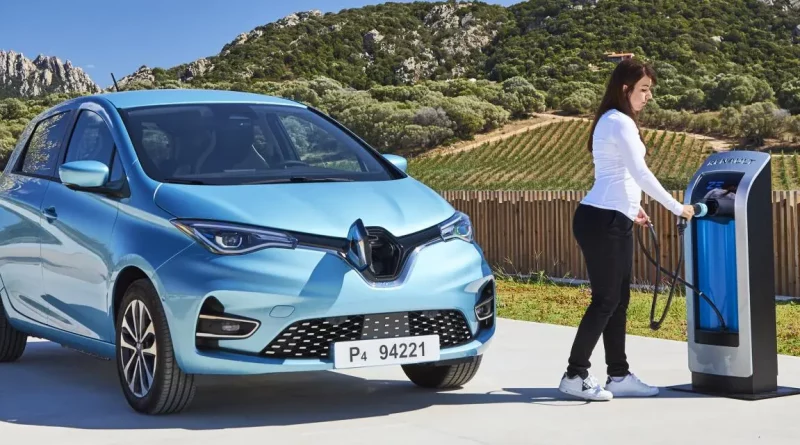You want an electric car with a 300-mile range ?
ARTICLE FROM THE NEW YORK TIMES
You Want an Electric Car With a 300-Mile Range? When Was the Last Time You Drove 300 Miles?
Mr. Niedermeyer is the author of “Ludicrous: The Unvarnished Story of Tesla Motors” and is a co-host of a podcast about the future of transportation.
Throughout the history of America’s love affair with the car, nothing has succeeded quite like excess. Electric vehicles are heading down that same path. Give an E.V. a big enough battery and a fast-charging network, and suddenly you have the kind of vehicle we’ve always loved in this country: big, heavy, powerful and ready to head off into the sunset at a moment’s notice.
If you’re lucky enough to drive one of the premium E.V.s that fits this description, you already may feel like your consumer desires are in perfect alignment with planetary environmental goals. After a decade of manufacturers selling E.V.s at luxury car prices, the government has made concerted efforts to get more people driving them. The recently signed Inflation Reduction Act offers extensive tax credits to buy both new and used E.V.s. California just announced that it intends to ban the sale of gas-powered vehicles starting in 2035.
However, these carrots and sticks merely tweak a fundamental approach to E.V. policy that has failed to achieve its goals. Rather than unleashing a mass market of affordable E.V.s, more than a decade of subsidies favoring large batteries has created an overheated market for premium E.V.s. A serious electrification policy will have to be tailored to the way we actually drive, not the way we think we do.
Like almost all E.V.-related challenges, it comes down to the battery. Providing the power and range that have made E.V.s appealing to American buyers requires massive batteries, which help make the current crop of E.V.s, on average, around 30 percentmore expensive than gas-powered cars. That problem will likely get worse as battery supply chain constraints make batteries more expensive, bucking past trends that have made them cheaper.
The path to lower battery costs is extracting and processing minerals at a greater scale. Building out that kind of supply chain is slow, expensive and dangerous work, especially as America aims to become more independent of China’s battery supply chain dominance.
Compared to the herculean task of building supply chains to sustain a broad domestic E.V. market, tackling this problem from the demand side almost seems easy. Proving that E.V.s can road trip may have been an important psychological hurdle for the technology to tackle, but it remains more psychological than real: the average American motorist drives about 40 miles per day and 95 percent of our car trips are 30 miles or shorter.
We haven’t so much overcome this psychological hurdle as thrown big batteries at it, which is having a paradoxical (if predictable) effect of actually entrenching it. Despite dramatic growth in median E.V. range, to 234 miles in 2021 from 90 miles in 2015, consumer demand for range is always one step ahead. Three hundred miles might have been a desirable figure for potential E.V. buyers in 2019, but come 2021 it was 341 miles, according to findings from Cox Automotive. We could cater endlessly to this desire for more range without ever satiating it: More is always more, but more is also never enough.
As much as these psychological challenges are born of American geography, history and mythology, they are also born of the unique attributes of gasoline. Rather than holding E.V. adoption hostage to our ability to make batteries match internal combustion in every way, government policy should focus on the cases where E.V.s have advantages that internal combustion will never match: waking up every morning with a full “tank” sufficient for daily commuting and errands.
By improving home charging for urban apartment dwellers and prioritizing vehicles with smaller batteries, rather than road-trip-enabling charging stations and big batteries, we could maximize the miles we can affordably electrify. In an era of battery scarcity, we could have two 150-mile E.V.s for the battery capacity in every 300-mile E.V. Or, using the same 300-mile E.V. battery, you could have six plug-in hybrids with 50 miles of electric range for daily driving and a gasoline engine for those rarer road trips or many, many more e-bikes.
For a century, Americans have had the luxury of choosing from a single, relatively uniform class of vehicles designed to serve all of their transportation needs whether they live in a small town or a big city. Electrification replaces that simplicity with a wide variety of different options, each with advantages and disadvantages in different realms. Government policy should match a limited battery supply to where it can have the maximum impact for consumers and the environment. That means incentives for a wide variety of smaller-battery vehicles to electrify our most common transportation needs and for home charging for all levels of housing density.
For some American households that may mean owning a single plug-in hybrid. For others that may mean a 150-mile E.V. for weekday miles and a hybrid truck for weekend projects and outdoor activities. Still other households might be able to serve their mobility needs with a mix of e-bikes, public transit and an occasional rental car. All of these options are better at delivering short- and medium-term fleet electrification in an era of battery scarcity than simply waiting for batteries to become cheap enough for every American to own a 300-plus-mile E.V.
The short time frame remaining to limit climate change brings unique urgency to the electrification challenge, but freeing our thinking from a century of car-bred habits will be critical in countless new mobility technologies. Making the most of emerging technologies always starts with understanding our needs and how best to meet them, not simply molding them into an image of the past. Figuring out how to grow the E.V. market across a decade of battery scarcity is only the most immediate opportunity to embrace this kind of challenge. How we face it will be telling.




